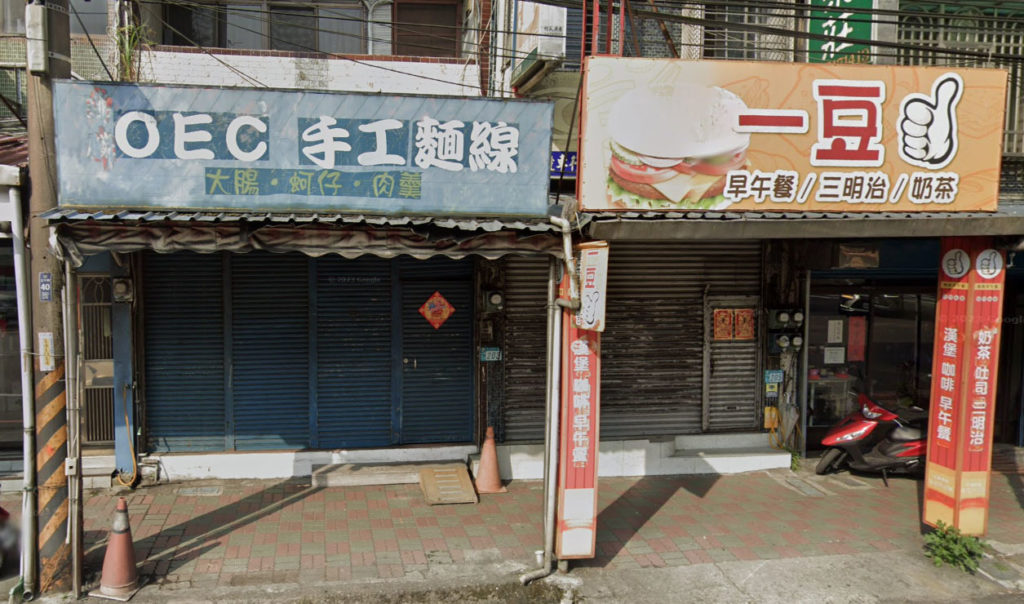Recently, on my way to Wulai (just south of Taipei), I spotted an interesting sign. Normally, the combination of “interesting sign” and “Wulai” means something in a language of one of Taiwan’s Indigenous Peoples. But for today I have something different: Japanese, Taiwanese, and Mandarin. Plus another bonus sign in Japanese (I think) — but more on that later.
I wasn’t able to get a good photo of my own, so here’s one from Google Street View.
The “OEC” on the sign on the left is meant to represent Japanese “oishī” (美味しい / おいしい), which means “delicious.” Knowledge of some Japanese words is very common in Taiwan, much as knowing a few words in Spanish is common in parts of the USA.
The whole top line is “OEC 手工麵線” (OEC shǒugōng miànxiàn) = “delicious handmade noodles.” The letters on the sign work like the hyphenated combinations in William Steig’s charming C D B.
The line below the sign’s headline is also linguistically interesting.
大腸, 蚵仔, 肉羹
(intestines, oysters, meat soup)
The second word, 蚵仔, would be pronounced kezi in Mandarin. But in Taiwan it’s standard for that to be read in Taiwanese as “ô-á.” Also notable is the use of handwriting — rather rare these days — instead of a computerized font.
The brunch shop next door also has what I strongly suspect is an interesting sign: 一豆, which in Mandarin is yi dou (lit. “one bean”). Someone who knows Japanese help me out with this one.


My guess is one bean means 一等. In Japanese, both would be ittou.
Did WordPress eat my kanji? I wrote y?d?ng yideng in pinyin.
A first-rate answer, Carl. (I hope I fixed that correctly.) Thanks.
Alas, yes, my WordPress eats kanji (and Pinyin with some tone marks), but not by my design. I still haven’t figured out how to fix the encoding that was damaged by a hack years ago. So for kanji/hanzi, etc., to work in posts and comments, it must be encoded first.